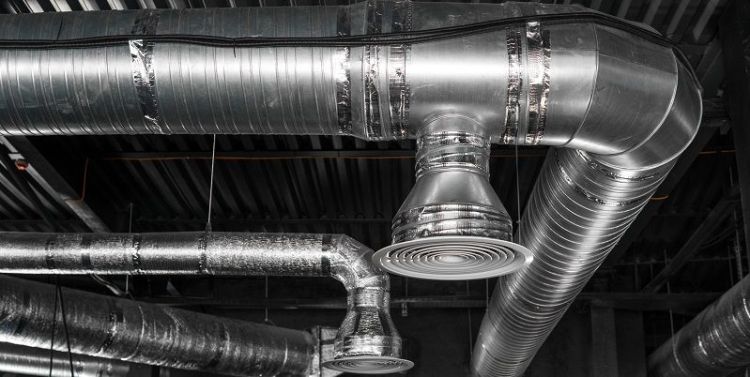Improve air quality inside buildings - leading engineers

Air quality inside buildings and on transport systems should be improved to reduce the impact of future pandemics or the spread of flu and other infectious diseases, say engineers and scientists.
Without including the effects of the COVID-19 pandemic, it has been estimated that the annual cost to the UK economy of people becoming ill through catching seasonal bugs amounts to around £8 billion.
In a new report, an expert working group led by the Royal Academy of Engineering and the Chartered Institution of Building Services Engineers said the economic costs would rise sharply if the UK was to experience another major pandemic over the next 60 years, with annual economic and societal costs reaching an estimated £23 billion.
The expert panel, which included Professor Cath Noakes from the School of Civil Engineering at Leeds, argues that there is a need to ensure that buildings and transport systems are designed, operated and managed to reduce the spread of pathogens in the air. People should have confidence that the air inside buildings and other enclosed spaces should be safe to breathe, just as they would expect water to be safe to drink.
Although air quality inside buildings is controlled by building regulations and standards, the COVID-19 pandemic has highlighted that some indoor spaces were not being operated in line with the current requirements – either because they were built before the regulations or not used as originally intended.
The report - Infection resilient environments: time for a major upgrade – was commissioned by the Government’s chief scientific advisor, Sir Patrick Vallance, and published by the National Engineering Policy Centre.
Speaking on the BBC Today programme, Professor Noakes said: “The cost of pandemics is huge. The cost of just seasonal diseases is huge - it is about £8 billion a year because of people off work sick.
“If you look at all the research on this, if we improve ventilation of buildings, that could reduce some of those risks by 30 to 50 percent. So, you can start to see that if we can improve the ventilation of buildings, we can put a significant dent not just into pandemics but also all those seasonal diseases that we experience.”
Asked how easy it would be to bring about change, Professor Noakes said the report had made a raft of recommendations including the need for new regulations and standards. But she added that a lot could be achieved with small changes to ventilation systems in buildings and in transport spaces, and with better maintenance of those systems.
The report authors also call for "infection resilience" to be adopted in the design of new and refurbished buildings such as the installation of non-touch sensors to open doors as a way of reducing the risks of cross contamination.
Professor Peter Guthrie, Vice President of the Royal Academy of Engineering, who chaired the expert panel, said: “If the built environment is not equipped to limit the spread of infections, there will be direct health costs from severe illness, long-term sickness or death. These will be further compounded into economic and social costs as health costs disrupt businesses, education and our daily lives.”
The recommendations made by the report include:
- The British Standards Institution (BSI) should convene the relevant expertise and develop meaningful standards that are embedded into existing design and operational practices.
- The UK Health Security Agency should promote the benefits of infection resilience and good indoor air quality to building and transport owners and the public through signage and ratings in a similar way as those for food or water standards.
- Ensuring that buildings operate as designed in terms of infection resilience. Industry bodies and public procurement must drive improvements to the commissioning and testing of building systems at handover, and subsequently over the life of a building.
Further information
For more details on the report, please contact David Lewis in the press office at the University of Leeds via d.lewis@leeds.ac.uk
-
Infection resilient environments: time for a major upgrade is published by the National Engineering Policy Centre, accompanied by three supporting analyses commissioned by the working group:
Top image: Adobe stock




